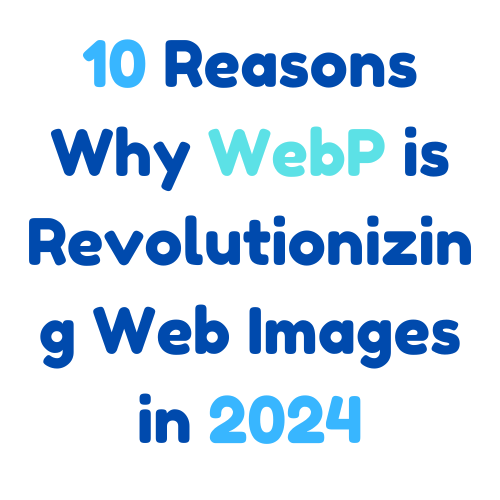As we progress further into the digital age, website performance and user experience have become more crucial than ever. Enter WebP, an image format developed by Google that’s changing the game for web images. In this article, we’ll explore 10 compelling reasons why WebP is revolutionizing the way we handle images on the web in 2024.
1. Superior Compression
WebP offers significantly better compression than traditional formats like JPEG and PNG. On average, WebP images are 25-35% smaller than their JPEG counterparts at equivalent visual quality. This dramatic reduction in file size is a game-changer for web performance.
2. Faster Page Load Times
Smaller file sizes translate directly to faster page load times. With WebP, websites can load noticeably quicker, providing a smoother browsing experience for users and potentially improving search engine rankings.
3. Lossless and Lossy Compression
WebP supports both lossless and lossy compression. This versatility allows developers to choose the best option for each image, balancing quality and file size as needed.
4. Alpha Channel Support
Unlike JPEG, WebP supports transparency (alpha channel) in both lossy and lossless modes. This feature makes WebP an excellent replacement for PNG in many scenarios, offering smaller file sizes without sacrificing transparency.
5. Animation Capabilities
WebP can replace GIFs for animations, offering significantly smaller file sizes. This capability makes WebP a versatile format for both static and animated images.
6. Improved SEO Performance
Search engines like Google factor in page speed when ranking websites. By reducing image sizes and improving load times, WebP can indirectly boost a site’s SEO performance.
7. Reduced Bandwidth Usage
Smaller image sizes mean less data transferred. This reduction in bandwidth usage is particularly beneficial for mobile users and can lead to cost savings for website owners with high traffic volumes.
8. Better Mobile Experience
With mobile internet usage continually rising, WebP’s smaller file sizes contribute to faster loading and smoother browsing on mobile devices, enhancing the overall mobile user experience.
9. Wide Browser Support
As of 2024, WebP is supported by all major modern web browsers, including Chrome, Firefox, Edge, and Safari. This widespread adoption has removed one of the primary barriers to WebP implementation.
10. Easy Integration with Modern Web Technologies
WebP integrates seamlessly with modern web development practices and tools. Many content management systems and image processing libraries now offer built-in support for WebP, making adoption easier than ever.
Conclusion
WebP’s combination of superior compression, versatility, and growing support makes it a revolutionary force in web image technology. As we move further into 2024, the adoption of WebP continues to grow, driving faster, more efficient websites across the internet.
Ready to harness the power of WebP for your website? Try our free JPG to WebP converter and start optimizing your images today!

